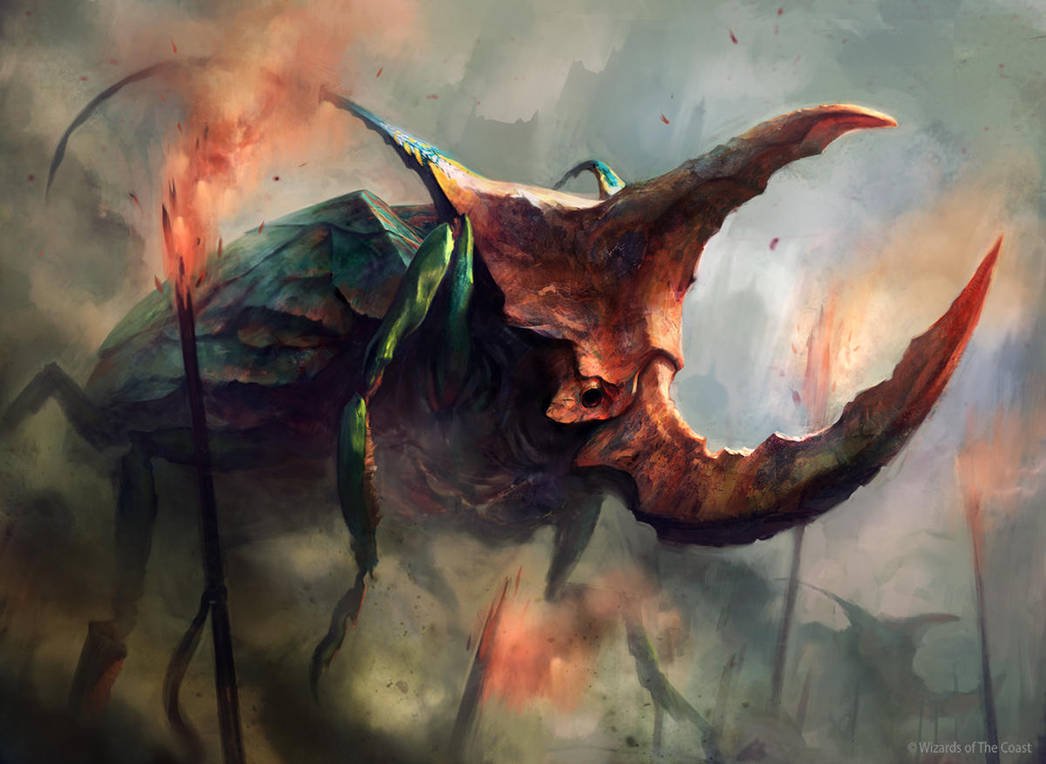Rhinoceros Beetle (giant)
| Species | insect (scarabaedae gargantua) |
| No. Appearing | 1–4 |
| Behaviour | solitary |
| Range | savannah |
| Size | 12 ft. long |
| Weight | 2½ tons |
| Intelligence | 0 |
| Armour Class | 2 |
| Hit Dice | 14 |
| Action Points | 3 |
| Max. Stride | {{{stride}}} |
| THAC0 | 12 |
| Hp/Die | 2d4+d6 |
| Attack Forms | horn |
| Damage | 4–24 |
| Special Attacks | buffeting |
A giant form of scarab beetle, the giant rhinoceros beetle is an immense creature with a thick, shiny and smooth exoskeleton. They are nocturnal in nature, and it is not unknown for isolated persons to hear trees being torn down or the heavy tramping of the beetle's feet as it passes close by in the dark. Unlike its smaller cousin, giant rhinoceros beetles are omnivorous as well as being scavengers.
The horns are heavy and are used in a swinging or butting fashion to defend themselves, or kill prey of sufficient size. The back carapace is a wing-cover, though these beasts are far too heavy to take to the air. If highly threatened, however, a rhinoceros beetle will spread its wings and beat them rapidly enough to buffet the air around them. This creates a windstorm, surrounding the creature with a radius of 4 combat hexes. Creatures smaller than 300 lbs. will be blown out of this circle and take 3 to 6 buffeting damage — half if a save vs. breath weapon is made. Creatures between 300 and 750 lbs. will be forced back one hex; creatures larger than 750 lbs. will be able to stand their ground.
The creature will seek to spawn in the charcoal layer left after a grassfire; larvae are deposited under a large tree, where they gestate below ground before eating their way into the trunk of the tree. Once the tree dies, the beetles (1-4) will emerge with soft bodies, growing to full size in about eight weeks.
When hunting, the rhinoceros beetle approaches cautiously, moving at normal speed before launching itself forward at double speed, ramming with its horn. These creatures are not known to act in groups.
See Bestiary
